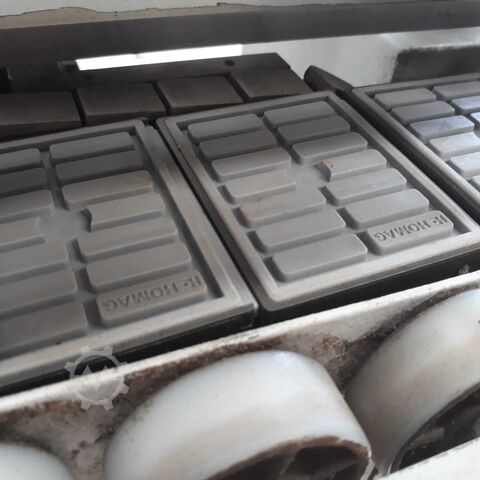Used Shaving Mills for sale (10,141)
 Lombardia
Lombardia Machining center
MORBIDELLIUNIX KBT
 Nordrhein-Westfalen
Nordrhein-Westfalen Automatic lathe
CitizenL 32 VII
 Středočeský kraj
Středočeský kraj Robotic milling system
StäubliRoboter-Fräsanlage

+44 20 806 810 84
 Hessen
Hessen Vertical machining center
DAHLIHMCV-860 + RoboJob MA 25
 Northern Ireland
Northern Ireland CNC turning and milling center
Mori SeikiNL 2000/500
Discover more used machines
 Gelderland
Gelderland CNC horizontal machining center
MorbidelliM100
 Lombardia
Lombardia Double-sided edge banding machine
STEFANIACTIVA SB
 Województwo warmińsko-mazurskie
Województwo warmińsko-mazurskie Edge banding machine
BIESSESTREAM B1
 Hessen
Hessen Milling machine
MicromillVMC-1600F
 Lombardia
Lombardia CNC turning and milling center
NAKAMURAWTS 150
 Päijät-Häme
Päijät-Häme Rod machining center
ElumatecSBZ 140
 Oslo
Oslo CNC turning and milling center
Mori SeikiNTX 2000 SZ 1500
 Lombardia
Lombardia Machining center
HOMAGOptimat BAZ 222/60/K
 Olomoucký kraj
Olomoucký kraj CNC lathe
ChevalierFVL-1250VTC+C
 Baden-Württemberg
Baden-Württemberg Portal milling machine
AWEALP-3021
 Lombardia
Lombardia CNC turning and milling center
BIGLIAB 765Y3
 Comunidad Valenciana
Comunidad Valenciana Machining center
MorbidelliUniversal 3612
 Baden-Württemberg
Baden-Württemberg CNC turn-mill center
MazakQT Nexus 250 MS
 Veneto
Veneto Travelling column milling machine
FPT IndustrieTESSEN
 Malaysia
Malaysia Universal Machining Centre
DECKEL MAHODMF 250 linear
 Comunidad Valenciana
Comunidad Valenciana Edge banding machine
HOMAGKAL 210 AMBITION 2264
 Japan
Japan Universal Machining Centre
MazakVariaxis i-500
 South Korea
South Korea Turn-Mill Centre
DMG MORIGildemeister CTX 1250 TC
 Thailand
Thailand Vertical Machining Centre
MazakVARIAXIS J-500
 Canada
Canada Turn-Mill Centre
DMGCTX Beta 1250 TC
Used Shaving Mills (10,141)
Search Machineseeker now with more than 200,000 used machines:Browse through the most popular machine descriptions:
This may be of interest to you

+44 20 806 810 84
















































































































































































































































































































































































